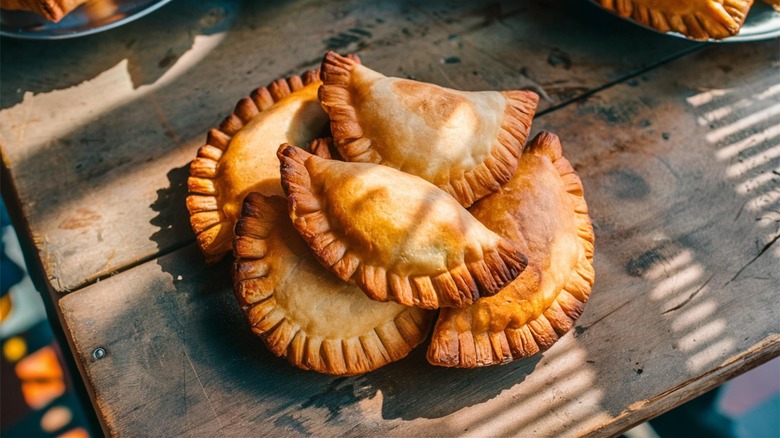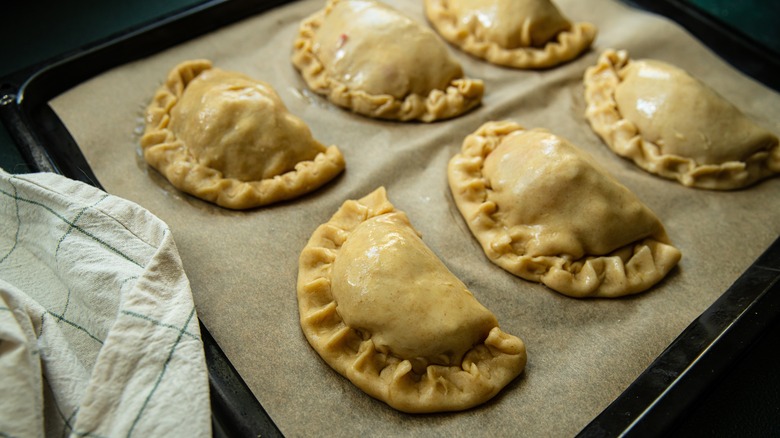Should You Bake Or Fry Empanadas? Follow This Expert Advice
It seems like every culture has its own version of a dough pocket stuffed with tender meat or veggie fillings, from Japanese gyoza to Jamaican beef patties. When it comes to Spanish and Latin American cuisine, empanadas reign supreme in this category, though they themselves may vary widely by region. Not to be confused with similar-looking calzones, empanadas are crescent moon-shaped hand pies with a flaky pastry exterior that can contain sweet or savory fillings, though in Latin America it's arguably most common to find meat or cheese-filled empanadas.
When it comes to cooking them, empanadas can be either baked or fried — which method you choose depends both on how health-conscious you are and what kind of filling you're using. To help clarify when to use each method, Chowhound spoke to Jose Horrach, the executive chef at New York City's Chica & The Don. The upscale Latin American fusion restaurant features an array of empanadas on their tapas menu, making Horrach the perfect person to school us on the dish.
According to the chef, the moisture of your filling is the main factor in determining which cooking method to use. "A dryer filling that doesn't have any sort of sauce or cheese inside tends to bake well," he says, "whereas anything saucy or cheesy fries better." That's because "if your filling is wet, it tends to make the dough wet from the inside, and [it] doesn't crisp up properly when baked," he adds.
How to adjust your empanada preparation for frying vs. baking
No matter which cooking method you use, most of the initial steps for making empanadas will be the same. You will need to make the dough (or buy a premade version) and cook your filling thoroughly before stuffing and closing the pastry. Popular Spanish foods manufacturer Goya actually produces two separate categories of premade empanada dough, one for frying and the other for baking, though most recipes for homemade pastry produce dough that is suitable for either method.
Baking is certainly the healthier choice, since it eliminates excessive oil from the equation. However, chef Jose Horrach points out that "frying has the advantage of cooking the outside of the dough quickly, which firms up your seal and prevents any sort of bursting." That means that your baked empanadas might be more prone to spontaneous combustion in the oven due to trapped steam bursting the pastries, which is obviously not the desired outcome. To prevent such an incident, Horrach has a tip for home cooks: "I would poke a venting hole in the dough when baking, so some of the steam inside the empanada can escape." Whether baked or fried, your crispy, golden-brown empanadas ought to be delicious.

